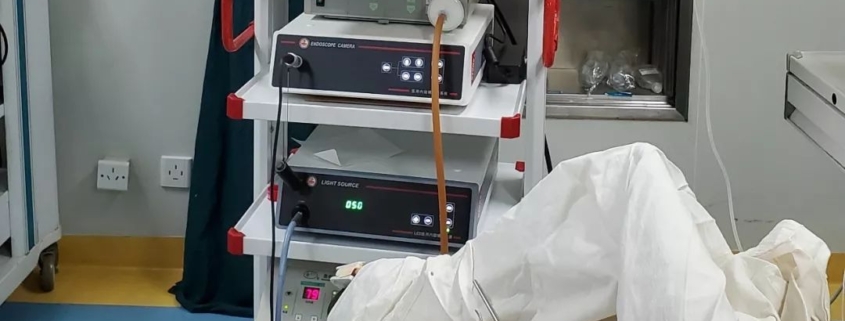Laparoscopic Appendectomy
Laparoscopic appendectomy refers to the operation of laparoscopic resection of the affected fallopian tube and ovary.
Indication
1. Patients over 40 years old with benign unilateral ovarian tumor and normal contralateral ovary.
2. Patients with inflammatory adhesions or masses of the appendix who suffer from repeated pelvic pain for a long time and whose conservative treatment is ineffective.
3. Residual ovarian syndrome.
4. The ovarian cyst is large, basically without normal ovarian tissue, or the ovarian cyst wall is closely adhered to the normal ovary, and the layer is unclear, which cannot be removed.
5. Patients with estrogen dependent breast cancer.
6. Prophylactic ovariectomy of women with familial ovarian cancer syndrome after childbirth.
7. Persistent ovarian mass after menopause.
Contraindication
Same as laparoscopic ovarian cyst removal.
Preoperative preparation
Same as preoperative preparation for ovarian cyst surgery.
Surgical procedures and skills
There are two methods of appendage removal: electrocoagulation and ligation.
1. Ligation method
(1) Put the ferrule: tie the No. 1 DJ wire through the knotter to form a sliding coil, and then put the inner ferrule on the same side through the casing sheath. Put one side of the ferrule under the tumor, and then slide the other side of the coil down the cyst surface to the cyst pedicle with a pliers. Note that the ovarian cyst and fallopian tube are outside the coil (Fig. 1 and Fig. 2).
Figure 1 exposure of ovarian cyst
Fig. 2 coil binding
(2) Tighten the coil and tie it. Tighten the coil, ligate the pelvic infundibulum ligament, fallopian tube and ovarian proper ligament, and tie it. It needs to be tied for 2-3 times. Note that when the coil is tightened, the ligation is as close to the basin wall and uterine horn as possible (Fig. 3 and Fig. 4).
Fig. 3 tightening coil
Figure 4 tying
(3) Excision of accessories: cut off or electrocoagulate the pedicle 0.5~1cm away from the suture knot (Fig. 5).
pictureFig. 5 outer shear of wire knot
(4) Remove the accessories: the method is the same as that of ovarian cyst removal (Fig. 6).
Figure 6 bagging and bagging accessories
2. Electrocoagulation
It is applicable to those who can not be ligated (such as those whose pedicles are thick, or whose pedicles are obviously swollen, whose broad ligaments are thickened, or whose ovarian proper ligaments are far away from the ovarian suspensory ligaments).
(1) Use ultrasonic scalpel or LigaSure to coagulate and cut pelvic infundibulum ligament, broad ligament, ovarian proper ligament and oviduct isthmus respectively (Fig. 7 ~ Fig. 10).
Figure 7 exposed ovaries
Figure 8 coagulation and excision of suspensory ligament of ovary
Figure 9 coagulated and incised ligaments
Figure 10 after resection
(2) The method of removing accessories is the same as that of removing ovarian cysts.
Intraoperative risks and Prevention
1. Injury of bowel and ureter
Preventive measures:
① If the tumor adheres to the surrounding tissue, separate the adhesion before resection;
② When coagulating and cutting the suspensory ligament of ovary, it is necessary to recognize the ureter and remove the left appendix, and pay attention not to damage the sigmoid colon;
③ If the ovarian cyst is huge, puncture and suck the cyst fluid first, suture or bind the puncture port, and then remove it.
2. Bleeding
Thread knot slippage or ovarian suspensory ligament stump cause bleeding.
Preventive measures:
① When the attachment is removed by ligation, the distance from the pedicle to the knot is more than 0.5cm to prevent the knot from slipping;
② If it is not suitable for binding, do not bind it forcibly, and use electrocoagulation;
③ After electrocoagulation, coil can be used to bind the stump to prevent late bleeding.
Thanks for reading, we hope you have enjoyed the content.
If you are looking for the endoscopy equipment, feel free to check our product page or contact us at our contact page.



Leave a Reply
Want to join the discussion?Feel free to contribute!